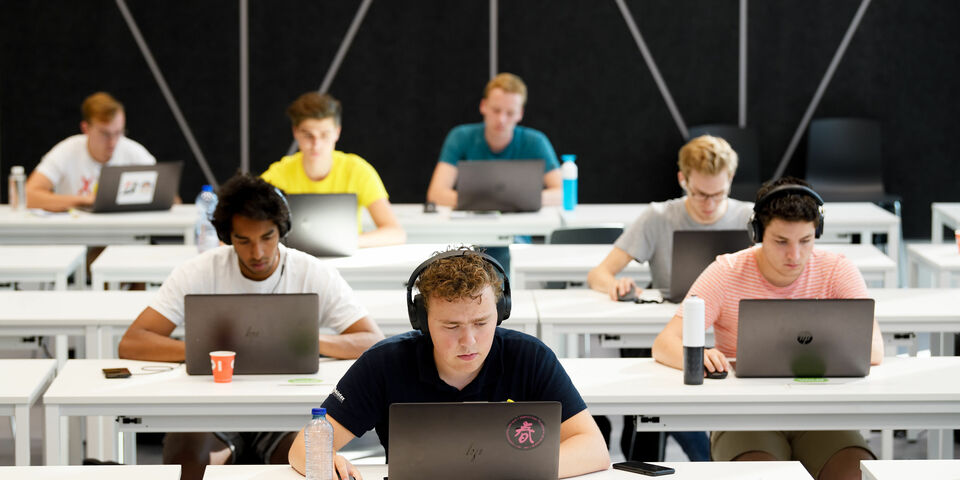Solar Team Eindhoven chooses a different direction
TU/e’s solar car team will not be producing a new family car and will not be taking part in the World Solar Challenge in Australia, an event the students have already won four times. The corona pandemic has played only a minor role in this decision. STE is aiming for something bigger, and for the time being will be staying put in Europe.
“The decision not to make another family car was actually already made by the previous team,” says Kjell Revenberg, team manager of Solar Team Eindhoven 2021. “We were given complete freedom to do something else. In order to discover what we wanted that to be, we went back to basics. What problems is mobility facing, how can we solve them and how can we inspire the market and develop new technologies? You see, now that Lightyear is producing the first commercial solar car, the team's original objective, stated in 2012, has already been achieved. So we want to head in a new direction.”
Bigger
As to what that new direction might be, at present the team wishes to say little more than that it will be something "a bit bigger". During its brainstorming phase, STE looked at which of today's societal and psychosocial problems it can solve. “Just think of, say, the occupancy level of vehicles, shared mobility, the fear some people have of electric driving - which is actually range anxiety - and even the aversion some people have to public transport,” says Revenberg in summing up. “Where larger vehicles are concerned, we think we can make a difference. In early March, when we are in the production phase, we will reveal exactly what we are going to do. At the moment we are still in the design phase; we are making sure that the engines are good, that we can drive safely, that the vehicle is aerodynamic, that kind of thing.”
The team members, now 23 students, are working mainly from home and occasionally at their office at Brainport Industries Campus (the main photo shows a number of them at work in the fall when they were still based in Atlas). In early March, when all the materials for the planned new vehicle have been designed, ordered and delivered, the team will start assembling its latest solar vehicle.
Not going to Australia
Although STE achieved four wins at the Bridgestone World Solar Challenge, by driving from the Northern Territory to South Australia more efficiently than other competitors, this was never their objective. “Our aim is to inspire the market and make a difference in society,” says Revenberg. “The challenge was a good means to this end and a good platform. But it also places a lot of restrictions on us. We have to get the batteries though customs, which causes huge stress. And we have to keep to a maximum length, and the solar panel can be no more than five square meters. Not taking part any more is going to allow us to produce something bigger and we'll have more time available.”
Even so, the organizers of the Bridgestone World Solar Challenge were happy to let the Eindhoven team join the drive without competing, just as a showpiece. Despite their fine offer, this time STE decided to stay closer to home: “It takes money and effort to ship our car to the other side of the world, resources we can put to better use here.”
European tour
Instead, there will be a European tour to drum up enthusiasm among both the public at large and the market. STE is keen to show itself on public roads in order to demonstrate what is already possible. The team will also visit places such as universities, museums and trade fairs and tell young people - and others - how technology can help build a sustainable future.
The plan is to start travelling in mid-September. This commitment brings its own heavy pressure; before then the Netherlands Vehicle Authority (RDW) must be persuaded of their roadworthiness. Team manager Revenberg has every confidence.
Today the team posted the video below to let all those interested know its decision and to give everyone the chance to follow them as they embark on this new process.


Discussion